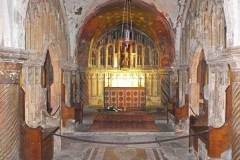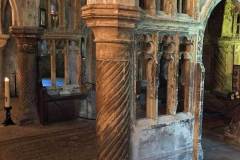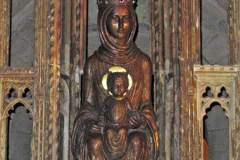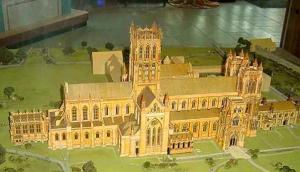Today is the 250th anniversary of the death of King Louis XV in 1774.
King Louis XV
A 1748 portrait by Maurice-Quentin de La Tour
Image: Wikipedia
He was 64, and had been King since he succeeded his great grandfather, King Louis XIV, in 1715 at the age of five and a half.
There is a decent biography of him on
Wikipedia which sets out the salient features of his reign and age, and which can be seen at
Louis XV
To adequately begin to consider the reign would take far longer than I have time for here and now, but here are a few reflections from my point of view.
The historiography of his reign is very much in terms of his predecessors’ achievements and, inevitably, whether or to what extent he bares all, or much, or some, or none of the blame for the outbreak of the French Revolution in 1789. Nineteenth century French writers, often sympathetic to the ideas of 1789, or hardline social and moral conservatives deeply opposed to than, seeking for the origins of revolution see them everywhere in the Ancien Régime. As Wikipedia points out a modern, if minority, trend is to be favourable to him.
I am definitely inclined to exonerate the King. Eighteenth century Europe moved at different speeds - reforming and modernising systems that were old and slow - getting the balance right was difficult. An explosion of the entire political and social mechanism was always a risk, yet it did not happen until 1789, and then only in one country to then cause Europe-wide chaos.
I am inclined to see what happened in France as very much a typical failing of France or of the French political system. National folie de grandeur in 1848,1870, 1914,1940, 1958, and indeed in recent decades results in a great power with a self-belief out of touch with the real situation. Eighteenth century France was in advance of much of Europe and believing in what it had achieved did not always see the practical impact of or need for reform like its rival Austria faced with an existential crisis in the 1740s or Spain and Portugal later on realising they were slipping backwards.
The Wikipedia biography shows that King Louis XV did attempt reform - it was not the monarchy that sought to prevent it but rather the Parlements by resisting. Reform was pragmatic for the King, and not ideological. He did not see himself as a Philosopher King like King Frederick the Great or, later on, the Emperor Joseph II.
It is possible to see France as complacent and intellectually self-indulgent in these years, but that is the country not its ruler. The Philosophes had an easy time in the reign with Mme. de Pompadour as a patron and advocate with the King.
If the Annales school are right - if - and all the issues are structures, then human agency is limited, as probably is awareness. We are all, to some extent, prisoners of our time and place, eighteenth century kings and lawyers, nobles and peasants alike - unless you have the Olympian detachment, blessed by hindsight, of an Annales historian.
French foreign policy remained in the mind set of the seventeenth century in many respects, gained little beyond Lorraine and Corsica, and preferred the Caribbean with its sugar to Canada in 1763. The many conflicts had little show for France as in 1783, save a weakened treasury. The contrast with Great Britain is instructive and to their fortunes over the next thirty or so years.
The Wikipedia entry describes the King’s feelings for his family - as an orphan bereft of close relatives his shyness and seeming lack of self belief alongside a resolve to maintain the constitutional rights of the Crown, and of the other components of the polity, and to resist unbalancing these, may well lie in the concatenation of death which surrounded his early years and accession.
Perhaps less concern with who King Louis had as his mistress and more with the day to day issues of governance he faced would help to reassess him.
A friend pointed out to me that today is also the 230th anniversary of the death on the guillotine of the King’s granddaughter Mme.Elisabeth. The French Revolution was not just a tragedy for a nation or a system, it was a tragedy for the French Royal Family and for countless others across the nation. Far better the pragmatic muddling through of King Louis XV than the crazed ideology of Robespierre.







